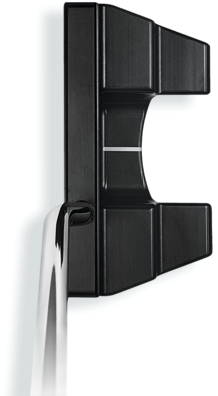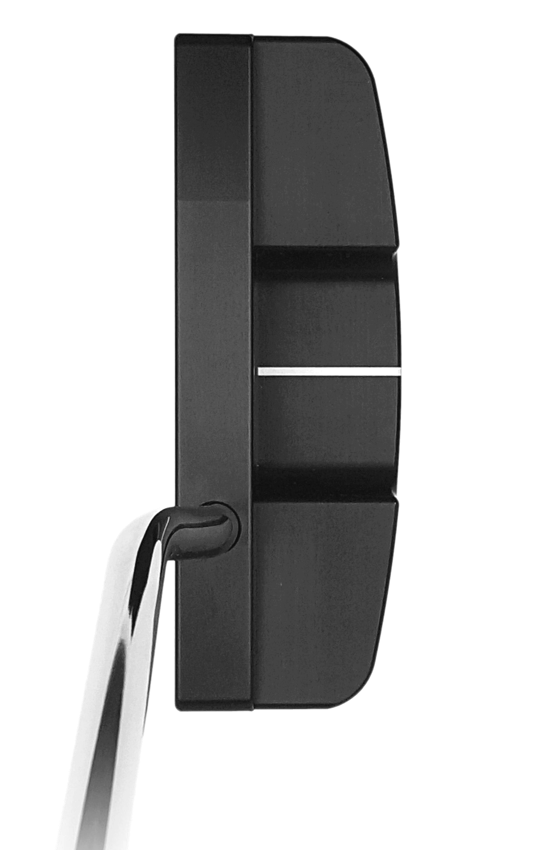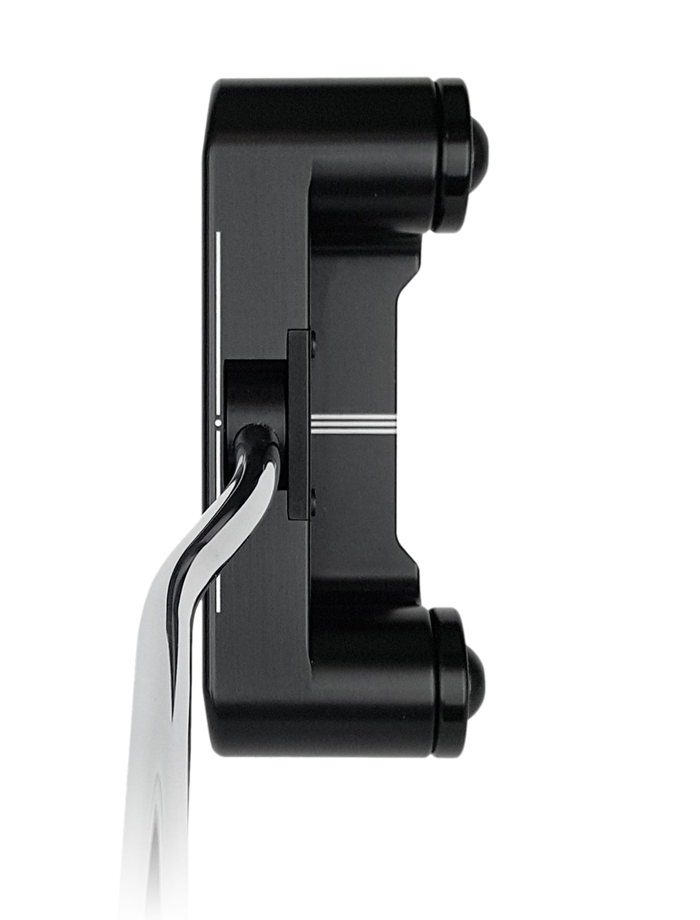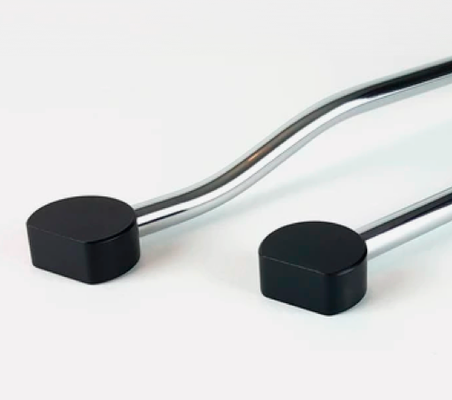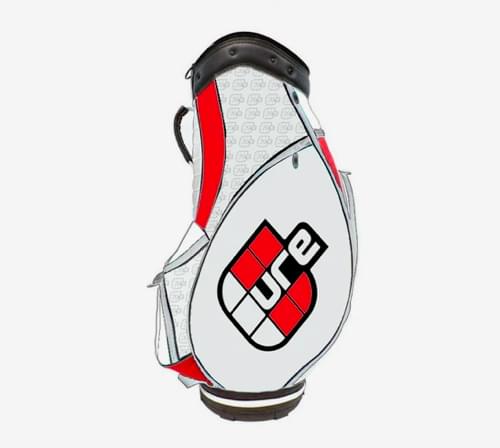Skid, Roll, Launch and Loft Myths
The Plain Truth about Skid and Roll
When a ball is struck by a putter it does not immediately begin to roll. It may be launched into the air and bounce a few times, with rolling motion added with every bounce. It may skid along the ground several inches while the friction with the green surface induces rolling motion. It achieves true pure roll when the entire circumference of the ball remains in contact with the green with no skidding. This skid phase generally takes only a few inches and amounts to between 10% and 20% of the entire length of the putt. For discussion purposes we will assume that the skid phase is about 15% of the putt length.
A 10’ putt will skid about 1.5’. The ball will leave the putter face at about 5 mph with the putter head traveling at about 3 mph at impact. The 5 mph ball speed divided by the 3 mph putter speed equals an impact ratio of about 1.7 (this is the “smash factor” if you have a driver in your hands in the fitting bay).
At the end of the skid phase the ball is rolling at about 3 mph and rolling at 600 rpm (revolutions per minute). That is to most, a surprisingly high rpm. The ball doesn’t “want” to roll, it requires a lot of energy to get the ball rolling. From the moment the ball is struck and energy from the putter head imparted to the ball the friction of the green’s surface relentlessly slows the ball to a stop. You can see the energy change in the diagram below. 2 mph of forward speed is “transformed” into rolling energy. To create an “instant” initial roll the ball would need just over 700 rpm (shown to the left of the diagram below).
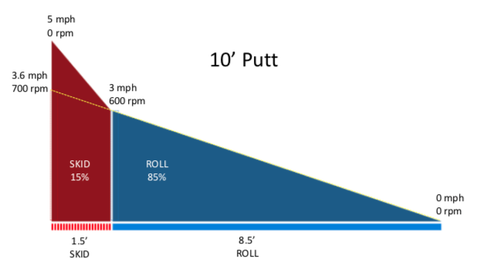
It is possible to impart a small amount of backspin, on the order of 50 to 100 rpm, at impact from a lofted putter and/or negative attack angle (hitting down on the ball). It is possible to impart a small amount of topspin, similarly on the order of 50 to 100 rpm, at impact from a low effective loft or positive attack angle (hitting up on the ball). It is simply NOT POSSIBLE to impart anything like the 700 rpm of topspin required to impart true pure roll at impact.
The topspin deficit is substantial on the 10’ putt above; on the 40’ putt below the topspin deficit becomes overwhelming.

Several manufacturers have claimed to be adding 25 to 50 rpm of top spin by using proprietary face or groove design. My guess is they can add 25 rpm to a 10’ putt and 50 rpm to a 40’ putt. Neither is going to make a very big change in the behavior of the ball on the green.
A bigger improvement in topspin can be made from decreasing the effective loft of the putter to between zero and two degrees and decreasing the attack angle (hitting the ball with a slightly upward stroke). As much as 100 rpm can be added to a 10’ putt and even more to a 40’ putt.
The biggest influence on topspin comes from loft and attack angle.
Skid Variation is the BIGGEST Issue
Reducing skid by adding topspin turns out to be a fool’s errand. Much more important is the variability of the skid distance from erratic launch angle and spin. Skid distance variation range is the most important launch monitor metric related to topspin and skid; and adding topspin does not improve this metric, if the spin and other metrics are erratic.
The surest way to decrease skid distance variation range is to increase the MOI of your putter and optimize your putter head weight.
Increasing MOI and Weight Optimization WILL Improve Results Dramatically
More importantly, numerous launch monitor variables can be improved dramatically simply by increasing the MOI of your putter and using a putter weight optimized for you as an individual.
The following variables are ALL improved with MOI and Weight Optimization Fitting:
face angle variation range, putter speed variation range; launch angle variation range; attack angle variation range; skid variation range; initial ball roll variation range; side spin variation range.
One Ball Revolution
The ball is 1.68” in diameter. The circumference is πD (3.1416 x 1.68 = 5.28”) or 0.440 feet. Revolutions per minute (rpm) is speed in feet per minute divided by 0.440 feet per revolution. 1 mph = 5280 feet per hour; or 88 feet per minute. This 88 ft/min divided by 0.44 feet per revolution = 200.73 rpm per mph (rounded to 200 rpm per mph in the examples above).

The Roll of a Stimpmeter
The ball leaves the bottom of a stimpmeter at 4.09 mph (1.83 m/sec) and is therefore rolling at 821 rpm. There is no skid with a stimpmeter (except on the incline), on the green there is only true pure roll.
Follow the Bouncing Ball
If the ball is launched into the air by a lofted putter and/or extreme positive attack angle, even if the initial spin is backspin, the first contact with the ground produces a lot of forward spin, topspin. And more spin is added by each subsequent bounce until the ball is at a true pure roll.

A Final Thought About Loft and Grooves
Several years ago RIFE introduced their 2 bar blade and claimed that their patented groove design was improving roll dramatically. The biggest difference in their putters however was not their grooves; the biggest difference was their loft. RIFE putters had a loft of 2° when the competition was at 4° or more.
Our launch monitor testing confirms that a 2° lofted putter produces much more topspin than a 4° lofted putter. The average loft of CURE putters is 2°; ranging from 1.5° to 2.5°.

